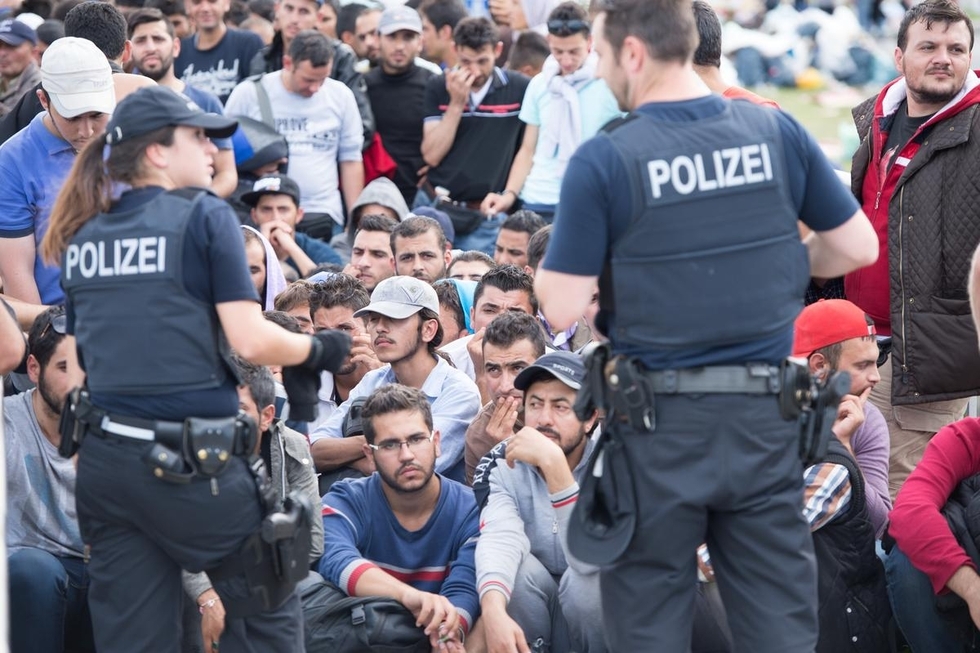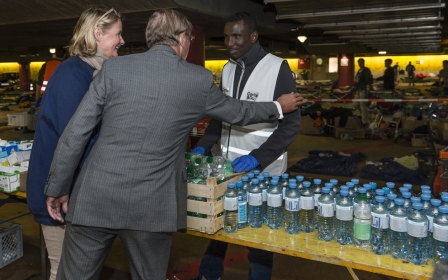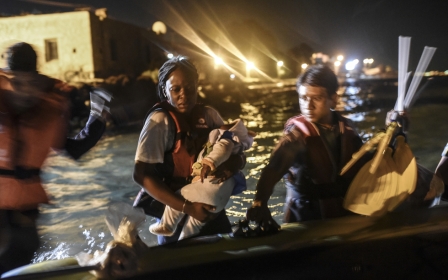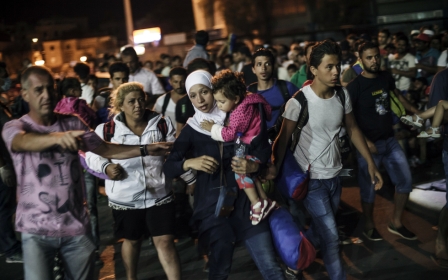Let refugees in: It's not about security

On Monday 14 September the Extraordinary Council of Interior Ministries of the European Union held yet another meeting in Brussels on the so-called migrant/refugee crisis. Once again, the EU member states have not managed to reach consensus on how to share responsibility for those in need of refuge. This is arguably the biggest crisis that has faced the Common European Asylum System (CEAS) since its inception in the 1990s, but it is not a migrant or refugee crisis.
First of all, it is a failure of political imagination, and a lack of political leadership. In recent days we have seen tear gas, water cannons and batons being used by the Hungarian riot police on helpless and vulnerable people. Irregular migrant and refugee crossings have become synonymous with either death at sea or violence at green borders. Despite all of this, EU leaders remain largely indifferent to this spectacle of suffering being played out at the borders of Fortress Europe, and remain preoccupied with passing the buck and refusing to help those in need.
Once again, the council’s latest conclusions are mainly security-oriented, and focused on reinforcing border controls and returns, instead of opening up legal routes for refugees and liberalising visa requirements for economic migrants, and also possibly introducing immediate Temporary Protection for Syrians given the scale of the conflict.
Most importantly, the Temporary Protection Directive accepts that people should be evacuated rather than make their own journey to Europe (although there is no fund to do that), which would prevent loss of life en route to safety. Walls, fences and high-tech surveillance system are a recipe for yet another human tragedy waiting to happen.
A unified asylum system is urgently needed; a system that would lead to the same chances of receiving protection, no matter in what EU country a claim has been made. Furthermore, people should be able to choose where they want to stay, notwithstanding their right to move within the EU labour market if needed; harmonisation of labour migration policies within the EU should go hand in hand with asylum policies.
There is already an extensive policy base regulating the European asylum system but there is a stark lack of political imagination and leadership to introduce innovative ideas that would replace the ineffective quota plans that still frame the protection of refugees as a border/burden-sharing issue rather than as a collective EU-wide obligation. Those quota plans are emergency-led and focused on quick fix in line with the language of “crisis” adopted by the European Commission.
Abandon the Dublin system
Ultimately, this also points to a broader lack of understanding of today’s world that is on the move, whether we like it or not. One could argue that it is not even a new political paradigm as people have always been migrating; in fact, the history of humankind is all about migration. People are not trees: they have always been on the move, and they will always be on the move. The sooner the European Commission understands this simple fact, the better. Furthermore, the Dublin system has to be abandoned once and for all. Refugees and migrants don’t only want to be alive, they want to live, like all of us; and that is why they should have a right to choose where they want to rebuild their lives, which is already a very big task that we should help them to accomplish.
If we take a quick look at the history of the Common European Asylum System (CEAS) that is now, more than ever before, we are failing those seeking protection. The war in the former Yugoslavia in the 1990s highlighted the need for a common and efficient asylum system. As a consequence, in December 1999 the European Council in Tampere started working on the creation of a Common European Asylum System (CEAS), and the Amsterdam Treaty of 1999 has become its cornerstone. One of the aims of CEAS was to prevent “asylum shopping,” that is asylum seekers choosing a favourable country (often simply a place where they already had family members, community connections etc.) where they would make their claim.
The Dublin Regulation that compels asylum seekers to ask for protection in the first EU country they enter came into force in 1997. This was later accompanied by the Eurodac Directive, which established a database of fingerprints that allows states to send asylum claimants back to those first countries. This was followed by Dublin II Regulation, one of the most criticised European asylum provisions, particularly under fire since 2007 due to large disparities in acceptance rates in different member states. For example, the approval rate for Eritrean asylum seekers in 2014 was as high as 92 percent in the United Kingdom, and as low as 15 percent in France. No wonder Eritreans risk their lives trying to reach Dover on trucks and ferries from Calais. But how is this EU asylum lottery possible when we have the Common European Asylum System?
From its onset, the system was framed within the discourse of “abuse” and “fraud prevention” that led to securitisation that we witness today, rather than to better conditions for asylum seekers. This was driven by the underlying assumption that asylum seekers are economic migrants in disguise; so an asylum seeker wanting to make a claim in a particular country was seen as somehow “less genuine”.
Furthermore, those who get stuck in the first country of asylum – simply because of their geographical location - are not welcomed there. Countries like Greece, Italy, Malta and Hungary simply lack the institutional capacity - and more importantly, often also political will - to provide adequate “first reception” conditions to asylum seekers, including access to a fair asylum procedure, with legal aid provision and interpreters.
Thus we have situations where an asylum seeker wants to move elsewhere, and a host country also wants the asylum seeker to leave. Why not make it happen?
The first steps of the asylum harmonisation were completed in 2004, with solidarity being an essential component of CEAS. However, the system has not worked effectively from the very beginning, and the differences between the member states remained as vast as ever, with drastically different standards for deciding who deserves to be granted international protection.
Consequently, the European Commission shifted its focus to cooperation and information exchange facilitated by a regulatory agency, the European Asylum Support Office (EASO) which was established in 2010 in Malta, and became fully operational in 2011. Its mandate is to support the implementation of the Common European Asylum System (CEAS), strengthen practical cooperation on asylum among the EU member states, and help member states facing particular pressure.
Common rules
Nevertheless, common rules are still interpreted in different ways. Some member states (Poland, Hungary, Slovakia, Czech Republic, Romania, and Latvia) remain opposed to any kind of mandatory relocation, the Schengen area is fragmented, and as a result asylum seekers are stuck in limbo and subject to human rights abuses when crossing the borders.
Germany, which for a moment seemed courageous enough to assert political and moral authority and to lead by example, reintroduced border controls on 13 September only a week after it opened its doors to all people coming through Hungary and Austria. Nevertheless, Germany’s stance towards asylum seekers remains the most generous among the member states.
On the other scale of the spectrum we have Hungary, which introduced a new border regime in the form of a fence on its border with Serbia, alongside criminalisation of irregular entry, with police violence awaiting people at the border and three years of imprisonment for those who enter the country irregularly.
Caught up in between all of this are desperate people fleeing conflict and human rights abuses; people who have dreams, and who are hoping to build a better life for themselves and their families.
Is it really too much to be asking for?
- Dr Natalia Paszkiewicz is a Projects Coordinator at the IARS International Institute. Her academic background is in anthropology, refugee studies and social policy. She has been working in the field of migration for over ten years, both in the UK and in Malta.
The views expressed in this article belong to the author and do not necessarily reflect the editorial policy of Middle East Eye.
Photo: German police stand guard as refugees wait on a bridge connecting Austria and Germany on 17 September, 2015 in Freilassing, Germany. (AA)
New MEE newsletter: Jerusalem Dispatch
Sign up to get the latest insights and analysis on Israel-Palestine, alongside Turkey Unpacked and other MEE newsletters
Middle East Eye delivers independent and unrivalled coverage and analysis of the Middle East, North Africa and beyond. To learn more about republishing this content and the associated fees, please fill out this form. More about MEE can be found here.





